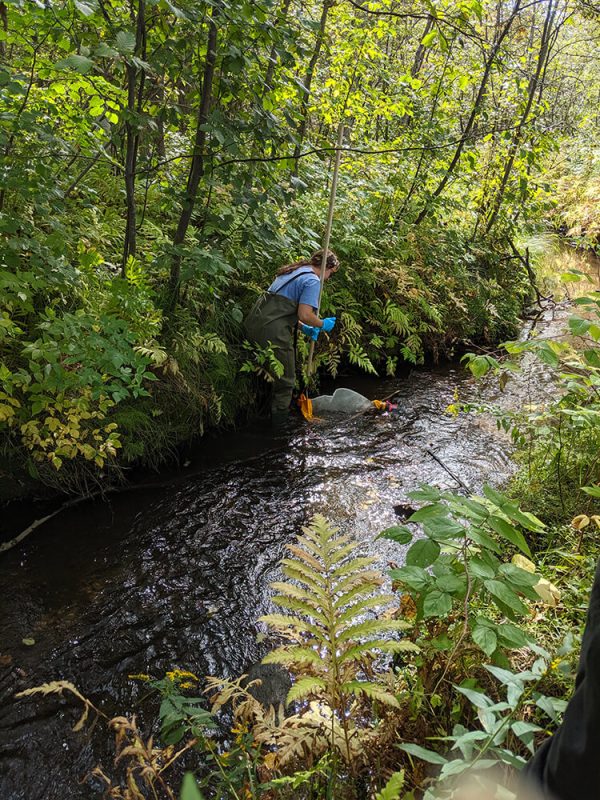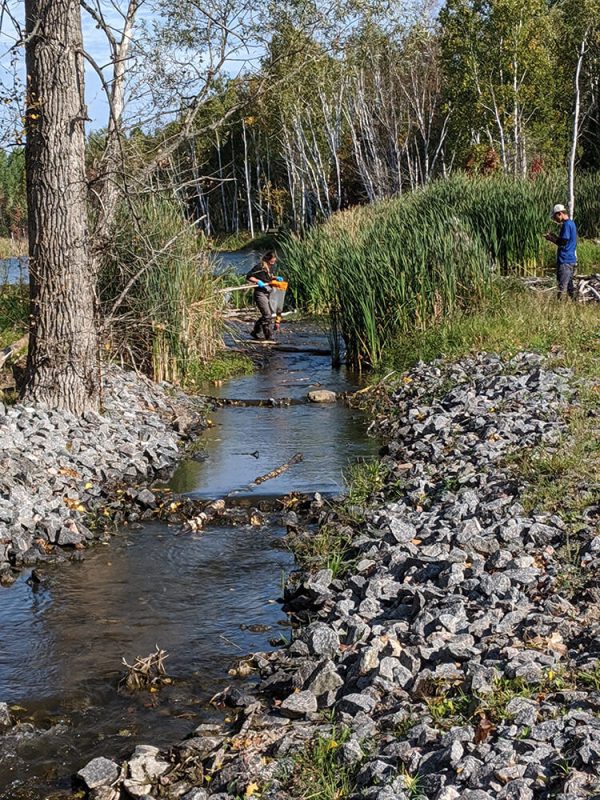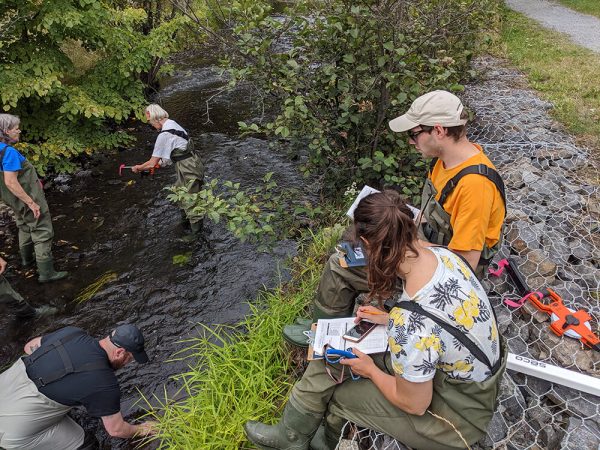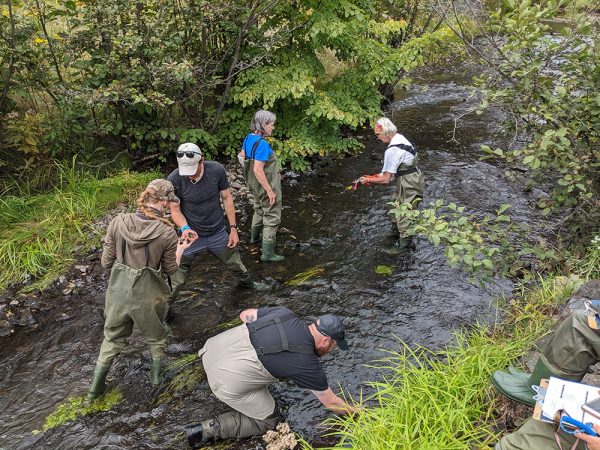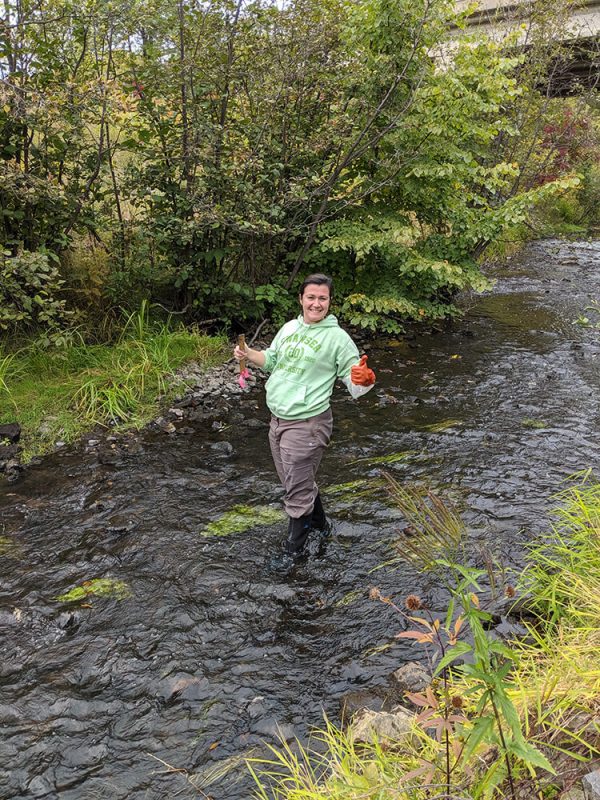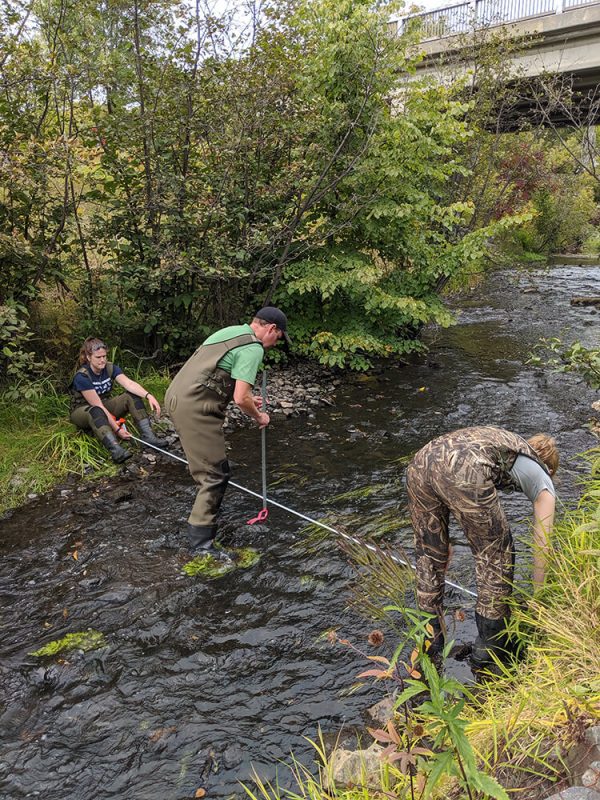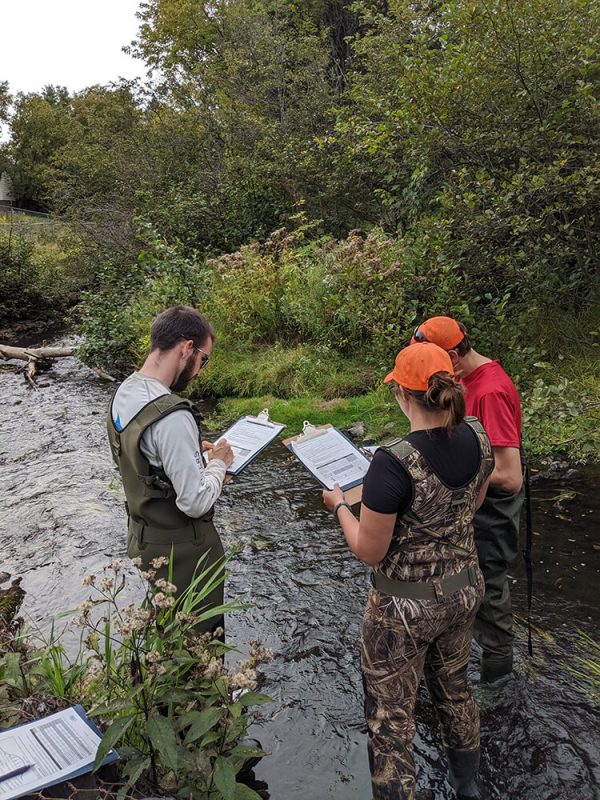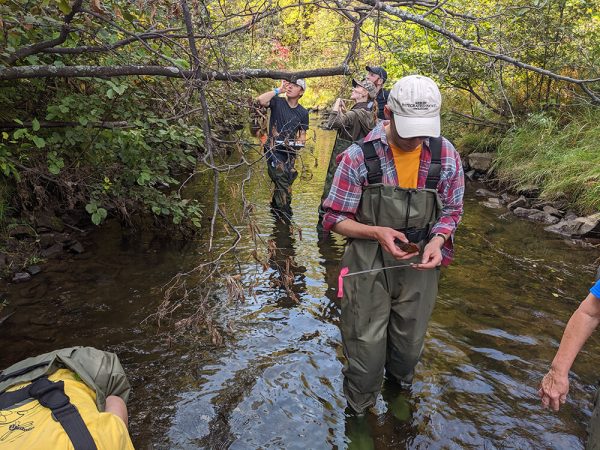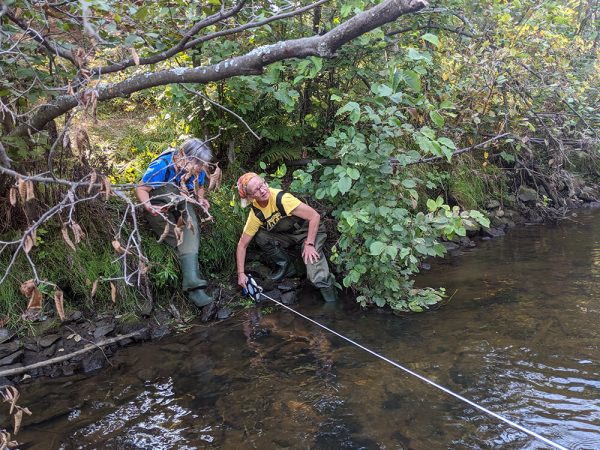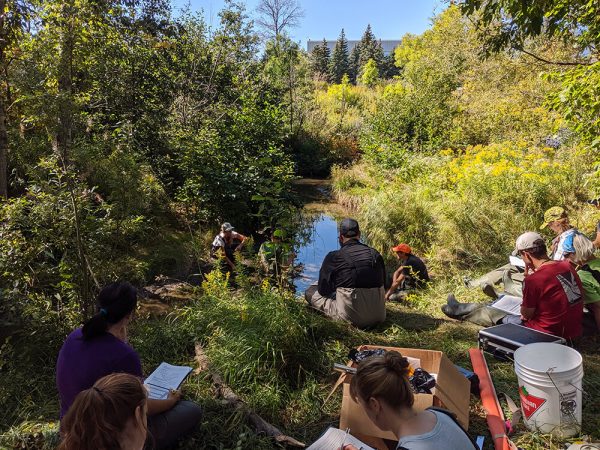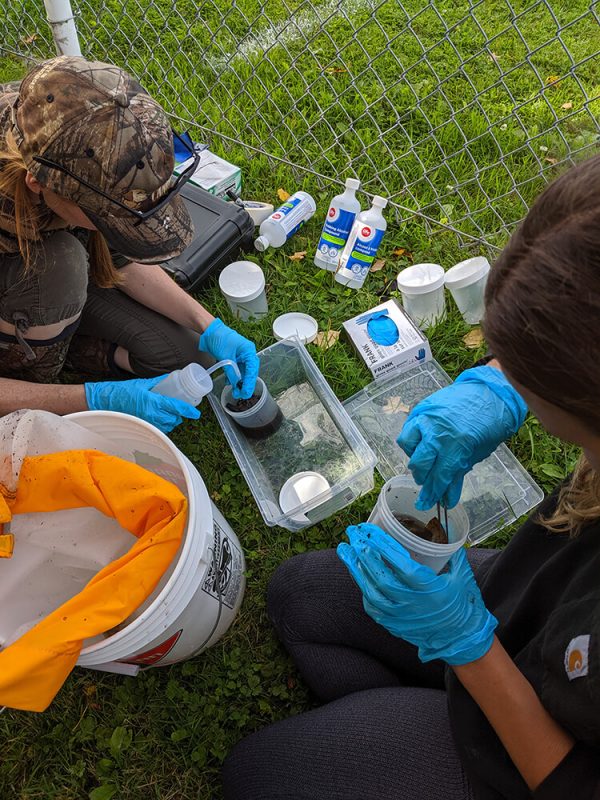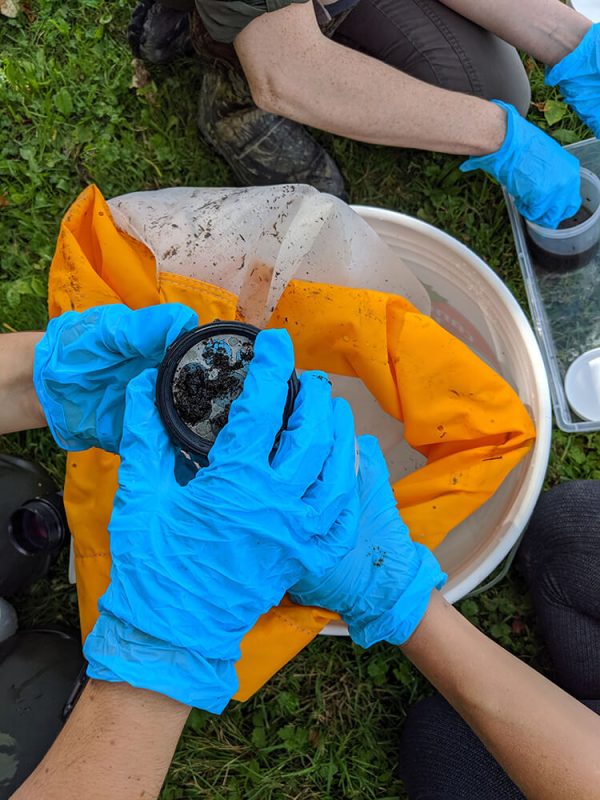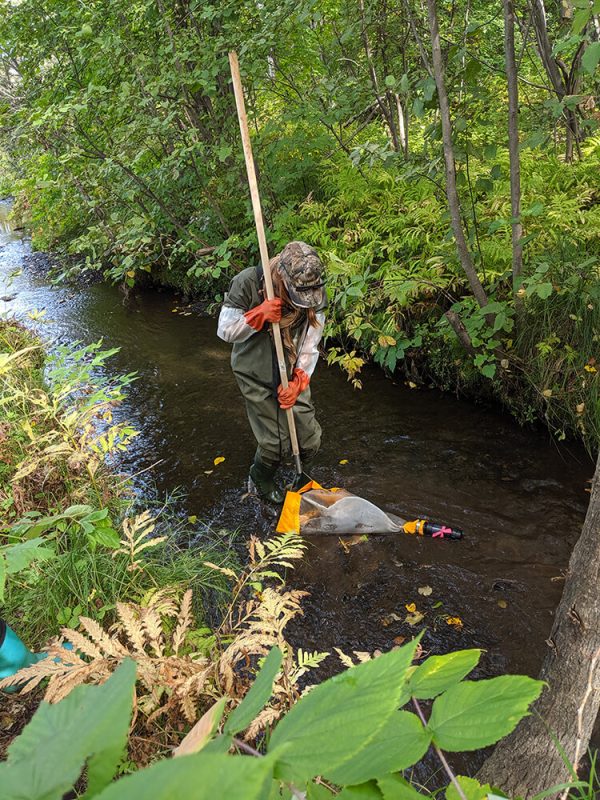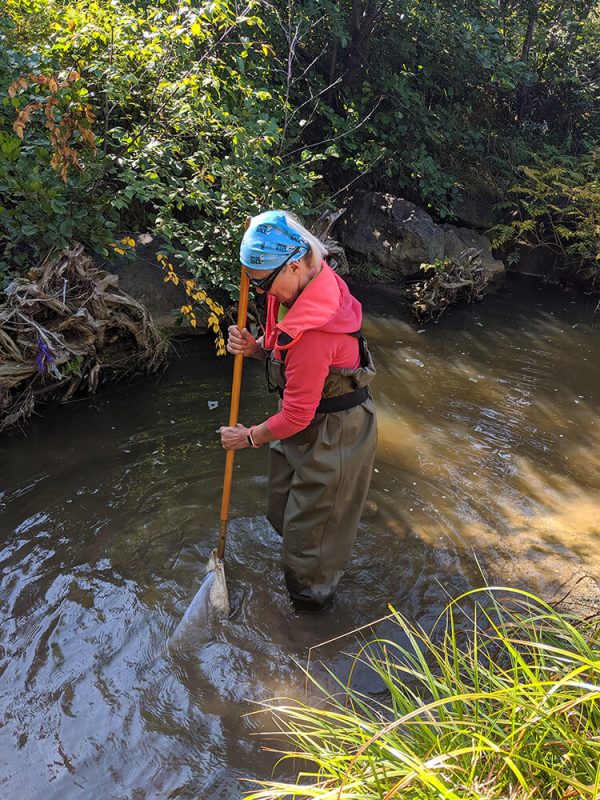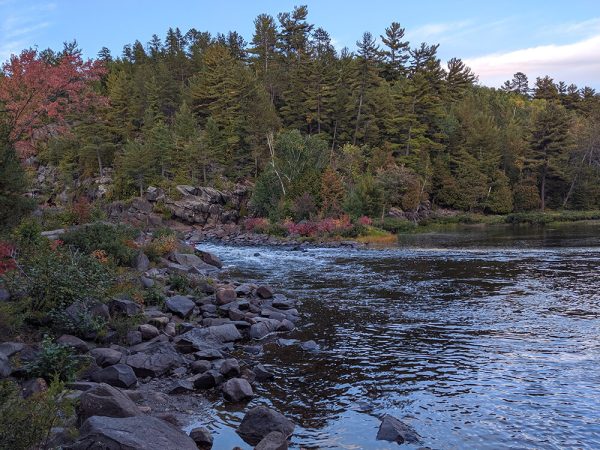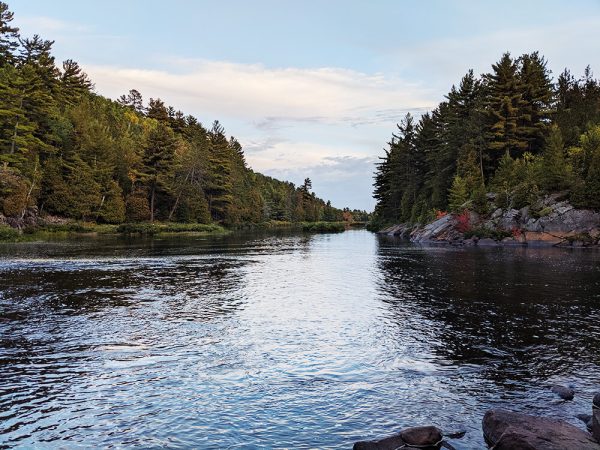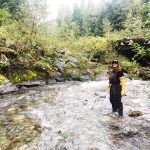Sudbury stewardship group inspired by STREAM training
Junction Creek Stewardship Committee (JCSC) staff and volunteers had an interesting couple of days in September thanks to a partnership with Living Lakes Canada, World Wildlife Fund-Canada, Environment and Climate Change Canada, and the University of Guelph.
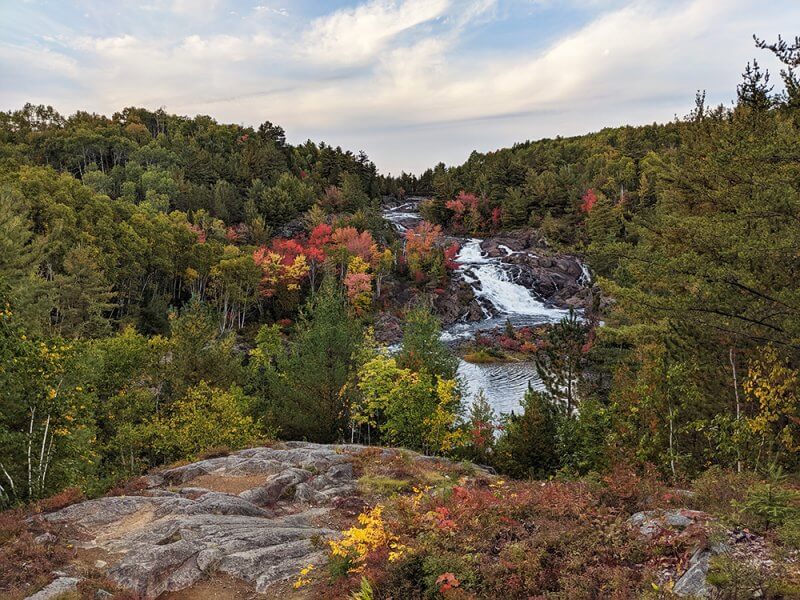
Junction Creek in Sudbury, ON.
Meeting early on a Wednesday morning, staff, volunteers and interested parties from around the province gathered at the JCSC office to embark on a short but exciting journey into the land of bugs, or — if we’re being scientific — benthic macroinvertebrates.
These creatures, found all around the world in streams, creeks, rivers and lakes, play an exceptionally important role in aquatic ecosystems. In addition to being found in lakes and rivers throughout Canada, these creatures are long lived, remain stationary within streams, and exhibit a wide array of tolerances to water pollution. These characteristics make benthic invertebrates (commonly referred to as benthos) excellent bio-indicators of water quality, and can therefore be a very useful tool in assessing stream health.
Coming back to our early morning gathering, the group had come together for the purpose of earning CABIN certifications. The Canadian Aquatic Biomonitoring Network (CABIN) is a nationally recognized protocol used for collecting benthos for the purposes of assessing the water quality of Canada’s rivers and streams. For staff and volunteers at the JCSC, this was an exciting opportunity to gain a better understanding of the health of Junction Creek and help inform our future restoration activities.
In addition to the CABIN certification, this project also included involvement in the STREAM project, an exciting new venture out of the University of Guelph using DNA metabarcoding to determine which species of benthos are present in a body of water. But before we could join organizations from across Canada in conducting surveys and contributing to STREAM, we first had to finish our CABIN certifications.
The process of carrying out a CABIN survey includes a number of components. First, and most important, is collecting the bugs. Our trainers explained how to conduct the 3-minute survey which involved a specialized fine-meshed net and vigorous kicking and splashing in the creek. The bugs we are looking to collect attach themselves to rocks and debris found at the bottom of streams and it takes a lot of work to dislodge them.
After collecting bugs, the next job is to gather environmental data. This data is used to give us a more complete picture of stream health. Some of the tasks included determining the type of substrate the creek bottom was made up of, assessing the vegetation communities both in water and along the creek banks, and measuring water chemistry parameters including pH, dissolved oxygen, and conductivity. While it doesn’t sound like a lot, the whole process can easily take more than two hours, and takes great attention to detail to ensure everything is done correctly. Practising took the group the better part of two days before everyone felt confident enough to carry out an entire survey with no help from our trainers.
Completing the two-day certification course was an exhausting but rewarding process. By the end, thanks to our excellent trainers, JCSC staff and volunteers were confident and excited to put our new skills to work throughout Junction Creek. Staff will be conducting surveys throughout the fall so be sure to stop and say hi if you see us in the creek! We’re always happy to talk and answer any questions about the work we’re doing.
Learn more about the JCSC. Visit https://junctioncreek.com/.


